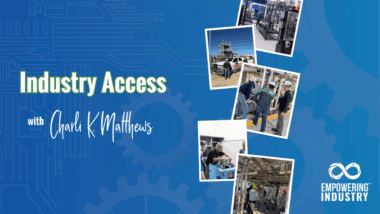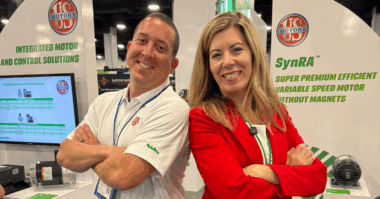Talking with Paul J. Still, Founder of Aerio LLC and lover of all things technical, I can’t help but wonder if the pump industry will embrace the use of radio controlled robotics. With all the advancements in technology over the past three decades, there have been many changes in how pumps have been designed, manufactured, tested, inspected, and even repaired. So how do radio controlled robotics fit into the picture?
“Radio controlled robotics have been proven to save time, money, and most importantly, lives,” declares Still. He goes on to explain that RCRs are not just used for flying, but have also been designed to climb, crawl, dive, and dig. This means their uses in a range of industries and an array of applications can open some amazing possibilities. “RCRs can go places people can’t. They can sustain severe hot or cold environments and fit into very tight spaces that people simply cannot access. More importantly, they can be engineered and retrofitted to help solve major issues, such as the nation’s crumbling infrastructure,” shares Still.
With patents pending Still and his team have produced RCR’s designed with high-end sensors, one particular RCR was built to travel with viscous material through miles of piping to scan millions of data points from inside the pipes. “RCRs can really help make a project much more efficient. For example, instead of sending an engineer or inspector to five different sites, we can put five RCR operators on the ground and feed real time data to the engineer. This saves much more time and is a better use of resources,” states Still.
With a focus on solving problems, Still and his team clearly think out of the box. They utilize various technologies, which include state-of-the-art cameras for high-resolution geo-specific photography and high-resolution video, as well as infrared scanning, radio frequency, and ultrasound. They have developed proprietary software which enables engineers to generate full 3D models of the objects scanned by the RCRs. Having that 3D model gives engineers the ability to run sophisticated analyses.
I can’t help but wonder if the use of RCRs will enable companies to become proactive rather than reactive when it comes to equipment maintenance. Could RCRs be cheaper in the long run? “If RCRs are used to collect data four or five times each year, this would give engineers the ability to see system changes over time and detect trends, helping them to make decisions that may maximize the overall efficiency of their operation. Efficiency almost always translates to saving money,” declares Still.
Aerio is not limited to designing RCRs for the pump industry, as it is still considered a “new” technology, even though the U.S. is about a decade behind when it comes to using Radio Controlled Robotics. Paul and his team are currently designing a digger for a local municipality which will act like a mole, pushing itself through the ground and pulling conduit behind it. They are also working on a swimmer / diver which will be purposed for the inspection of dams, waterways, ships, boats, and canals.
I look forward to seeing how the pump industry decides to use RCRs. What are your thoughts or questions about RCRs?




